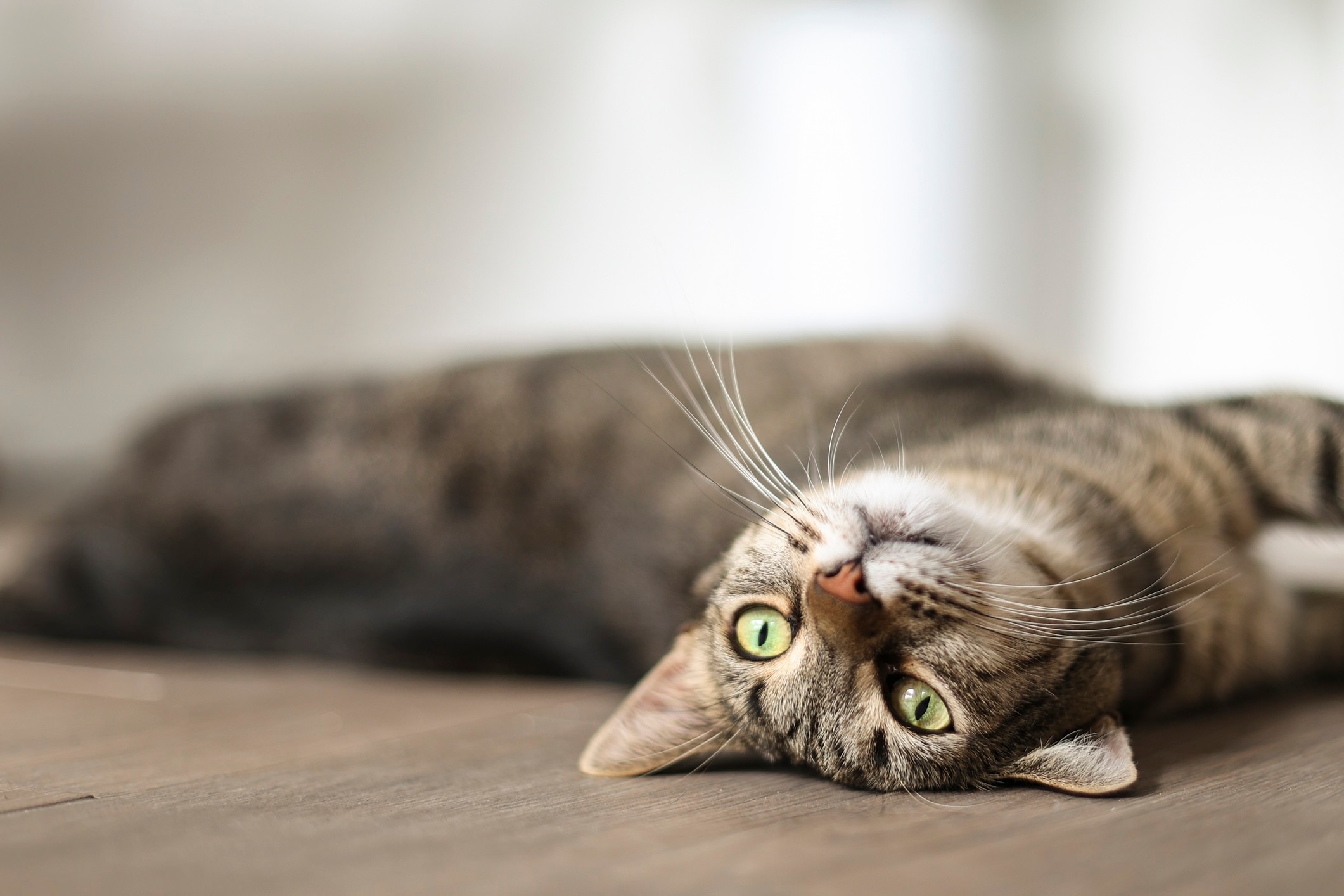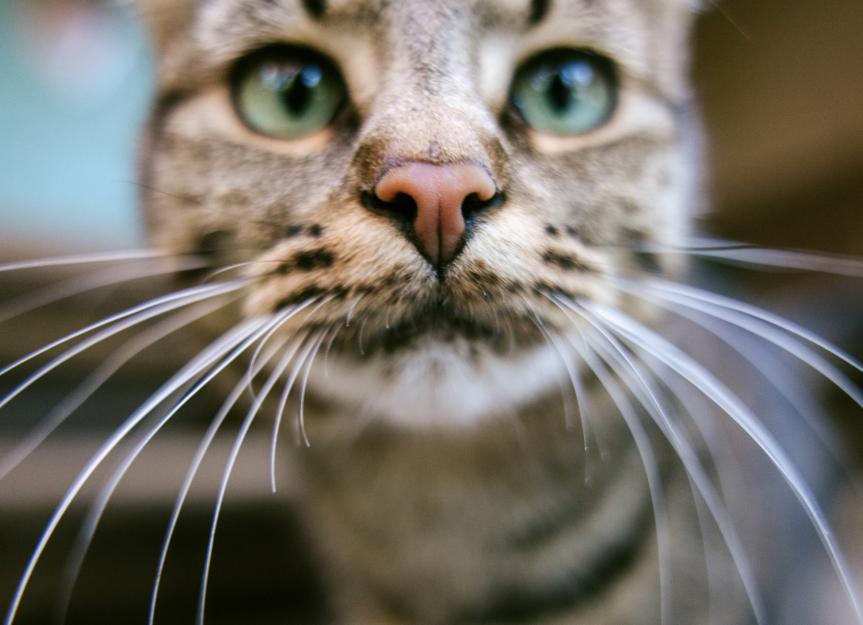Have you ever noticed your cat’s whiskers twitch when they’re focused, or how your cat never bumps into furniture in the dark? Those long hairs aren’t just for show—whiskers are high-tech tools packed with purpose.
Cat whiskers help your feline friend explore, hunt, and even express their mood. Let’s dive into ten surprising facts about cat whiskers that prove they’re far more than just fancy facial hair.
Key Takeaways
- Cat whiskers are powerful sensory tools that help cats navigate their environment.
- Whiskers are deeply embedded in a cat’s skin and surrounded by nerves and blood vessels, making them extremely sensitive.
- Each cat has a unique whisker pattern, and whiskers aren’t limited to a cat’s face.
- Damage to a cat’s whiskers can impair balance and coordination.
1. Cat Whiskers Are Extremely Sensitive
Cat whiskers, also known as vibrissae, are super-sensitive touch receptors that help cats navigate the world.
Each whisker is deeply embedded in the cat’s skin and surrounded by nerves and blood vessels. When something brushes against a whisker, it sends signals directly to a cat’s brain.
These hairs can detect even the tiniest changes in air currents, which means cats can “feel” things before they even touch them. That’s part of what makes cats such graceful hunters—even in complete darkness.
And because whiskers are so sensitive, cats may show signs of whisker fatigue, which can cause stress and discomfort. Offering your cat food in a wide, shallow bowl and using a pet water fountain might help take stress off their whiskers.
2. Cats Shed Their Whiskers, And the Whiskers Grow Back
Just like fur, whiskers go through a natural cycle of shedding and regrowth. It’s completely normal to find a lost whisker or two around the house.
On average, cats have a complete set of whiskers replaced every few months. But unlike fur, whiskers take longer to regrow—sometimes several weeks—so don’t be alarmed if your kitty looks a little asymmetrical for a while.
3. Whiskers Should Never Be Trimmed

Given how much cats rely on them, never trim your cat’s whiskers. Even though they’re just hair, whiskers are essential for a cat’s balance, spatial awareness, and sense of direction.
Trimming whiskers can leave cats feeling stressed and disoriented. It’s like suddenly being blindfolded—very confusing!
4. Whiskers Help Cats ‘See’ in the Dark
Cats have excellent night vision, but their whiskers give them an extra edge. In low light, they use their whiskers to sense the shape, size, and movement of objects around them—kind of like a sixth sense.
By detecting subtle shifts in the air, cats can avoid bumping into things, sneak up on prey, or leap onto high, narrow ledges with precision. It’s like having invisible radar built into their face.
5. Whiskers Are Usually as Wide as a Cat’s Body
The size of a cat’s whiskers isn’t random; they’re usually about the same width as the cat’s body. Their size helps cats judge whether they can fit through tight spaces, like under furniture or through a gap in a fence.
If the whiskers touch both sides of a space, it tells the cat they may get stuck. That’s a handy feature for animals who love squeezing into small places to hide.
6. Whiskers Can Show Your Cat’s Mood

Believe it or not, you can learn a lot about how your cat is feeling simply by watching their whiskers.
When a cat is relaxed, their whiskers are loose and out to the side. If they’re alert or curious, the whiskers point forward. And when they are scared or angry, the whiskers pull back tightly against the face. It’s like reading cat body language.
7. Every Cat Has a Unique Whisker Pattern
Just like human fingerprints, a cat’s whisker pattern is unique; no two cats have exactly the same spacing or number of whiskers.
While most cats have about 24 whiskers on their cheeks—12 on each side—the exact placement and angle vary from cat to cat. Some longhaired cat breeds may even have extra-long or extra-curly whiskers.
8. Cats Have Whiskers in Surprising Places
You probably notice the whiskers around your cat’s nose. But did you know cats also have whiskers on their eyebrows, chin, and even the back of their front legs?
The leg whiskers, called carpal vibrissae, help detect movement from prey or obstacles below them, which is especially handy during hunting or climbing.
9. Whiskers Help Cats Hunt with Precision

Cats are nearsighted. So when prey—or a prey-like toy—is too close for a cat to see clearly, whiskers step in to help.
The whiskers around the nose and on the front legs detect tiny movements, vibrations, and even body heat. These detection skills enable outdoor cats to hunt better at dawn or dusk.
10. Damaged Whiskers Can Affect Balance
Because whiskers are so tied to a cat’s spatial awareness and balance, damage to them—whether from injury or trimming—can throw a cat off their game. Cats with broken or missing whiskers might misjudge jumps, bump into things, or seem hesitant in familiar spaces.
While cat whiskers do grow back, they serve as a good reminder of how essential they are to a cat’s physical coordination and confidence.



